Prince Patriarcat de la Rose
 Official State Flag
Official State Flag
Brief History
Born out of the fires of the Luxiumite Revolution and the Wastelands of Ninisani in 973 VTE came a new religious awakening around one man, Jean Dubois. Dubois was the leader of the last remaining of the Pétales, the Rosemi worshippers native to the region they once called the Roseraie. The former Royaume du Rosaire was destroyed in the anarchy that consumed the central plain that we know as the Badlands today and all but 25,000 of her people were saved from annihilation by the hordes.
Under Dubois, they would fortify themselves in hills and valleys of Southern Roseraie and Dubois' knights won a great victory that stemmed the Schizo onslaught. Following this victory, Dubois would receive a vision from the Great Rosemaiden herself, telling him that he would form a Holy State from which her lands would be reconquered from the Schizos and profligates alike and that he would be the first Patriarch of the state. When he awoke, he found many had shared his dream and they would declare him Prince-Patriarch on the future site of the Palais de la Grande Rose in the soon to be founded city of Bellerose.
Prince-Patriarch Jean I would lay the foundations for his state and many of the principles that the state holds today come from Jean's vision. First, he ordered the capital of Bellerose to be constructed on the sight of the great battle. The city of humble origins would grow in time to be the religious, social, and economic center of the nation. He also had two Holy Orders created, both by the bravest knights that fought at Bellerose, Jacques de Dampierre and Odo de la Garanderie. Dampierre would found the Ordre de l’Épine and Garanderie, the Ordre du Sacré Rosaire.
Unfortunately, the two former friends would grow to become enemies thanks to their drive to recruit the Knights that were available. Odo ended up recruiting the most, much to Jacques' anger as he believed he had been underhanded in his dealings. This aside, both men would take their lot start to build castles to protect the lands and an agreement was reached. Jacques would take the west and Odo the east.
As time has gone along, the Prince-Patriarchate of the Rose has grown in size and numbers, as well as her holy orders. The central core of the state is anchored around the capital, while the orders control their own halves of the state which encompasses land from the Pomeranian Border to the Kossack Border. As things currently stand, Prince-Patriarch Jean IX rules over the state with the Orders being headed by the Grand Masters Lothaire de Beauvais of the Thorn Knights and Louis-Antoine de Villehardouin of the Rosaire Knights.
 Map
Map
Political and Social Organization
As a whole, the lands of the Patriarchate and its holy orders are of feudal nature but it different classes and class rules depend on where in the realm you are.
Direct Rule
The lands directly under the rule of the Patriarch himself are divided into 4 separate classes. From the Top down, the Nobility/Priests, the Artisans, the Peasants and the Slaves.
The priests are the heart of the state, all being from noble houses and trained in the theology and statesmanship required to run the realm. They are joined at the top with their fellow nobles. The men born into noble families are trained from birth to be "complete", which is to say they excel at both martial arts and are well learned too. Young noblemen are given a choice around 12 whether they want to go fight in one of the two orders, whereby they would be sent to become a squire or whether they would adopt a civilian life. Noblewomen aren't afforded this luxury in this male-dominated society, but they are from birth trained to be mothers and homemakers.
Artisans are a vital part of the state, and they have almost as many rights as the nobility, given much of the needed luxury, weapons and tools have to be produced by them.
Peasants are the lower class which work the land for food or serve as laborers in other industries. They have rights as peasants and are expected to be treated fairly under the law so that not even Nobles can take advantage of them. They are also not tied to the land either and have free movement under the law. This holds up in reality too.
Slaves are less common directly under the Patriarch, usually just being held by wealthy landowners or working in hard labor but they are in general treated better than those under the Holy Orders.
Order Rule
The lands that both of the orders control directly are ruled de jure by the Patriarch, but the reality is that they are under de facto rule from the Grand Master of whatever order controls the land. Most of the land in the Patriarchate falls under their jurisdiction and these areas are geared largely to the needs of the Orders themselves. Villages and small towns do exist in these lands, but no real major cities have been established, due to the Order's belief that the Bourgeois class will undermine their authority. While in area of Direct Rule, there would be much greater amounts of social mobility, there is no such social mobility under the Orders. Furthermore, the Orders usually treat their own nobles better than those from Rosebelle, and there has not been a Grand Master from a Rosebelle Noble Family in 120 years.
There are 6 classes in the lands of the Order, the Landed Nobility, the Knightly class, the Gentry Class, the Coutiliers, the Serfs and the Slaves.
The Landed Nobility are the creme of the crop and own most of the land. Like those from Rosebelle, they also are trained in both intellectual and martial arts but unlike those back in the capital, they have no choice when it comes to martial service. The Knightly class is lesser than them and are usually directly under the landed nobles themselves, followed by the Gentry and Coutiliers under them. The Knightly and Gentry class is also trained from birth to become warriors, while the lesser Coutilier class are only partially trained as they also serve as farmers. The Gentry and Coutilier class also have real rights to their land and legal protection from those up the social ladder. Even if most of the Gentry and Coutiliers live on Noble land themselves, they are not tied to it and many of the proponents of expansionism in the Orders come from the Gentry and Coutilier Classes. There is also some degree of Social Mobility between the 3 classes, as Gentry can work their way into Knighthood by bravery and Knights can become Nobles too. Indeed, several Grand Masters have come from the Knightly class. Coutiliers are less likely to have such opportunities but on rare occasions can reach the level of Gentry.
Women from the top three classes are often used for political marriages and are also trained similarly to those in the capital. But polygamy is a common practice amongst the men of the top 4 social classes, and many young girls that are kidnapped become in some form a sex slave or concubine for men
from all three of these classes. This is a result of the continued need to get more boys to fight in the constant wars.
The lower two classes, the Serfs and the Slaves are not afforded the same rights or social mobility as the top three. Serfs do better than slaves as they have legal rights under feudal law that is sometimes upheld and are generally treated better because they are believe in the one true Goddess, unlike the Slaves. Slaves have no rights whatsoever and are worked hard in the mines and farms that they are used in. They receive only enough food that they can work hard enough to be productive. Children of two slaves will remain slaves and many slave children do not make it out of childhood.
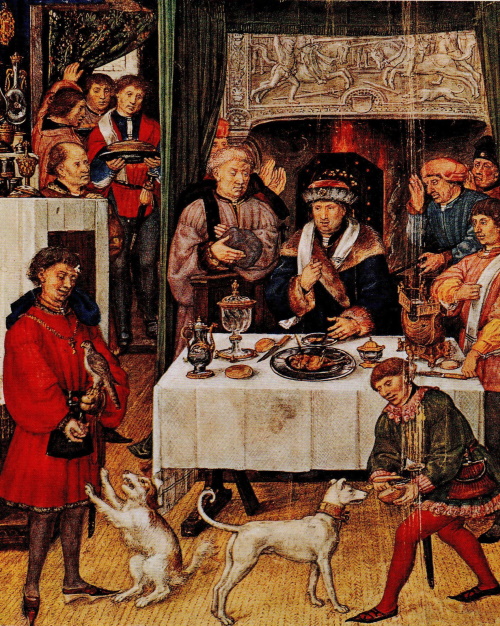 It's good to be a noble.
It's good to be a noble.
 The life of a Serf could be far worse than it is.
The life of a Serf could be far worse than it is.
Military Organization
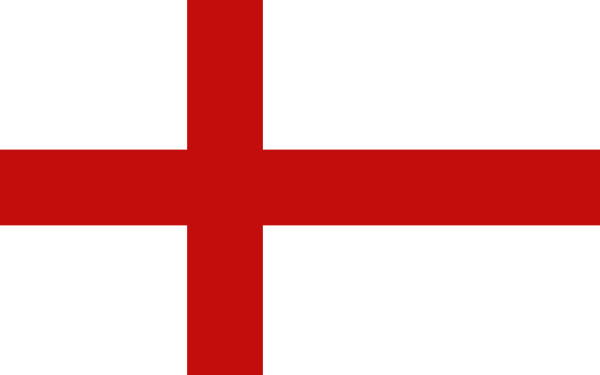 War Flag
The Military of the Patriarchate mostly revolves around the two orders, but there is local militia and the Elite Roseguards, which protect his holiness that defend Rosebelle from all threats.
War Flag
The Military of the Patriarchate mostly revolves around the two orders, but there is local militia and the Elite Roseguards, which protect his holiness that defend Rosebelle from all threats.
Going forward to the Holy Orders, both of follow the same doctrine and army composition as each other.
The best units in the Order come from the Nobles themselves and are known as the Gendarme. These heavy cavalrymen wear the heaviest of plate armor and use the best horses in the realm. As both Orders have expanded, their number has increased to around 2,000 combined.
The Chevaliers, or Knights are also heavy cavalry that come Knightly class. While their armor and horses are not to the standard of the Gendarmes, they are still a very effective heavy cavalry that can deliver a devastating charge upon an enemy line. A total of 6,000 exist combined in both orders.
The Men-at-Arms represent Medium and Light Cavalry that come from the Gentry (and wealthier) Coutilier classes. They tend to avoid the heavier horse armor that the other two have and focus more on the speed of the charge. Men-at-Arms also represent the heavier, Halberd armed infantry that is the core of the infantry force that the orders contain. A total of 6,000 Men-at-Arms serves as Cavalry while another 8,000 serve as Infantry for both Orders
The Fantassins or simply Infantrymen is the common term to describe the Infantry of the Orders. They come from the Coutilier class and are armed with pikes, halberds, poleaxes, Bec de Corbin and the Voulge; all Polearms. They are usually armored with gambeson and are well trained in unit tactics. A total of 20,000 Fantassins serve in the orders.
The Beaufortiers, or Beauforts are a unique type of crossbowmen that carry large Pavise shields along with their heavy crossbows. They are also drawn from the Coutilier class and represent 4,000 men in the army of both orders.
A new unit, known as Arquebusier, are starting to take hold in the Army. Armed with gunpowder Arquebuses, these men are often used in conjunction with the Beaufortier to add firepower to the infantry formations. These make up around 6,000 men from both orders and come from the Coutilier class.
Culverins and other artillery guns are used in small numbers in field battles by the order too.
Total: 14,000 Cavalry and 36,000 Infantry
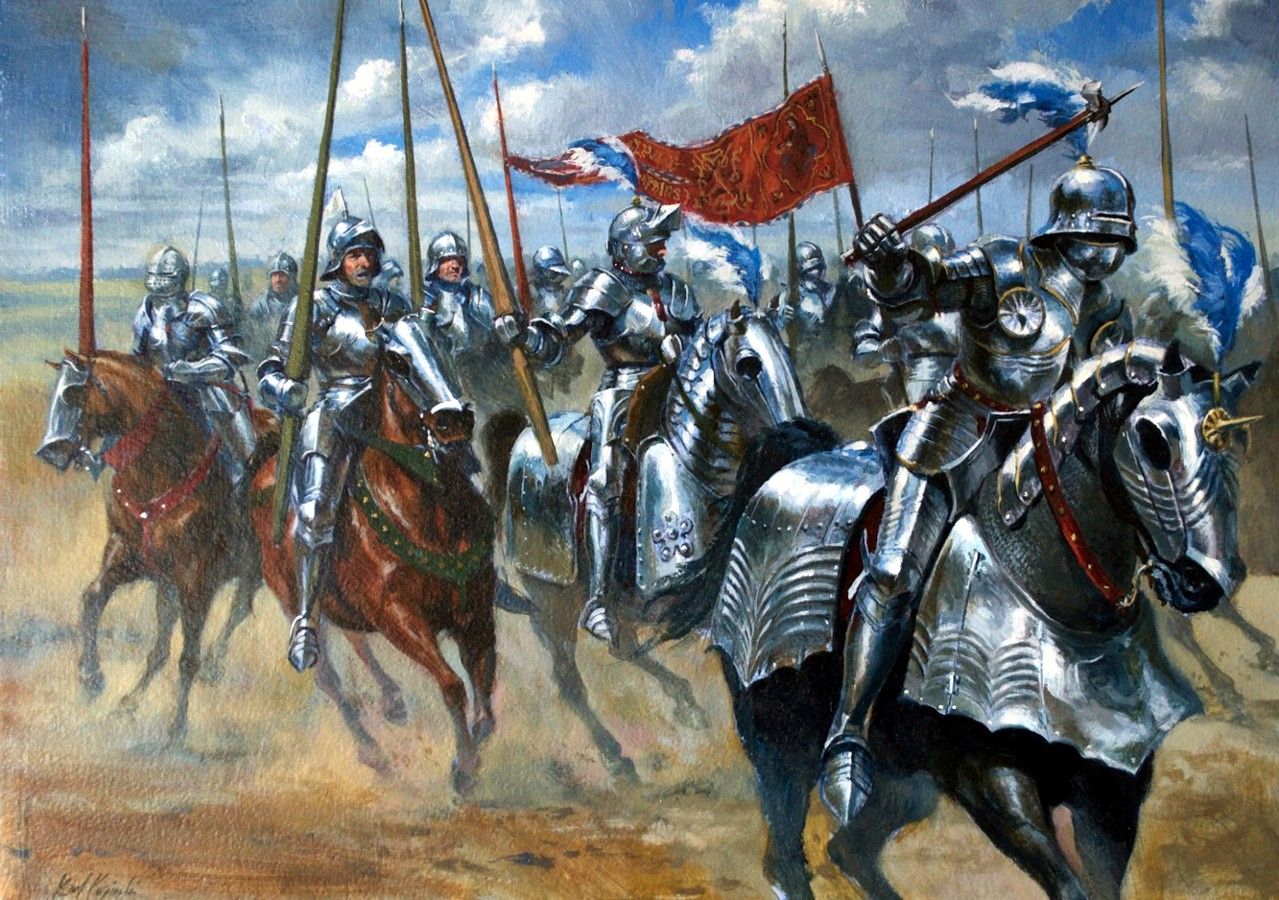 Gendarme
Gendarme
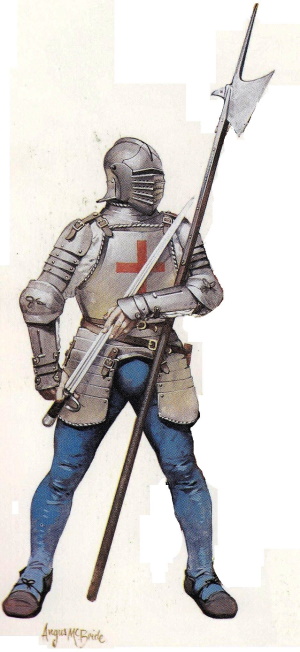 Man-at-Arms on foot
Man-at-Arms on foot
 Beaufortier
Beaufortier
Economy
The Economy of the Patriachate is largely based on slave and serf labor for the purposes of war and splendor. Iron, Coal, Copper, Tin, Gold, and Silver are all harvested from numerous mines that are across the realm. The crop of choice amongst most farmers in wheat, with potatoes, and other vegetables making up most of the agricultural production. Livestock like Cattle, Sheep and Pigs also make up large sections of the Agricultural sector and are essential parts of the diets of the locals. The leather and wool that also comes from them also are important to the cobblers, tanners, and craftsmen of the land. Vineyards are also popular around the Dubois River and most of the alcohol comes from these legendary vineyards that grow Rose wine.
Trade is minimal with the outside world, and only caravans under the protection of the emperor as mandated by an old treaty is authorized from the Patriarchate. These traders are not treated well by other lands and often have troubling selling and buying goods because of the actions of the state.
Looting from neighbors, however, is an extremely significant part of the "trade" and makes up for the trade deficit and more. Why buy for something you can loot?
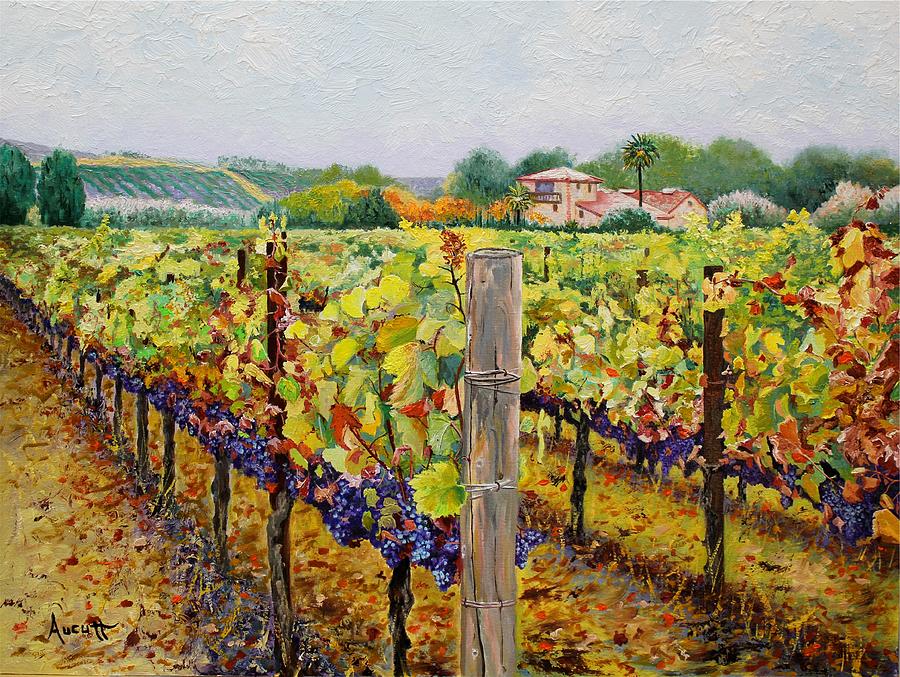 Famous Rose Valley Vineyard
Famous Rose Valley Vineyard
 Why buy for something you can loot?
Why buy for something you can loot?
Diplomatic Relations
While the Patriarchate is recognized as a legitimate state by the Empire, it is only weakness of Imperial Authority and lack of protection in borderlands has allowed this state to exist. It is hated by all of its neighbors for its brutality and barbarity. The Order largely preys upon the Holy Kingdom, the Ethyrian Confederacy, the Kingdom of Selenium and the Kingdom of Pomerania for its loot and slaves. The plant people to the south have been found to be poor slaves but are still targeted for the fun of it.
Culture
As a war-based society, the Patriarchate takes pride culturally its victory over its neighbors. Every noble from other domains that is killed has their skull turned into a drinking cup by whomever gets the kill. Fingerbones are also sought after, and every person killed in the name of Rosemi has one of their pinkies taken as a prize for collection. Warriors love to show off their collection of them and having a lot brings great prestige. The so-called Plantes géantes, or Giant Plants that come from the barren wastes of the Southwest are particularly valued for blood sport. A skull of them is the greatest prize of all! Other martial based skill events such as Archery competitions, Jousting, fencing and wrestling are popular past times amongst the warrior and noble classes.
Once a battle is over, it is custom for the leader of the battle to drink the blood of the slain enemy commander or another officer as a sign of superiority. It is called the Boisson de guerre and is done to ensure Rosemi is venerated through their victory.
Festivals celebrating Rosemi are common throughout the land on Holy Days, which are days where great heroes from the past are honored. The holiest day of all is Jour de la Rose on September 16th as it is the alleged date of birth of Rosemi herself and the date of the great victory over the Schizos at Rosebelle. Much drinking, feasting and prayer is conducted on this day. It is closed by fireworks and the showering of Rosepetals across the realm.
Every dead Pétales is cremated and buried in Rosegardens, where they shall be with Rosemi forever. Those who die in Battle for Rosemi are said to become her bodyguards in the afterlife.
In Rosebelle, the arts and music are celebrated unlike in other parts of the realm, as is the cultivation of knowledge in general. The Great Library of Rosebelle contains literature collected from around the world (by loot or by purchased), while the Great Rose Theater holds many operas and plays.
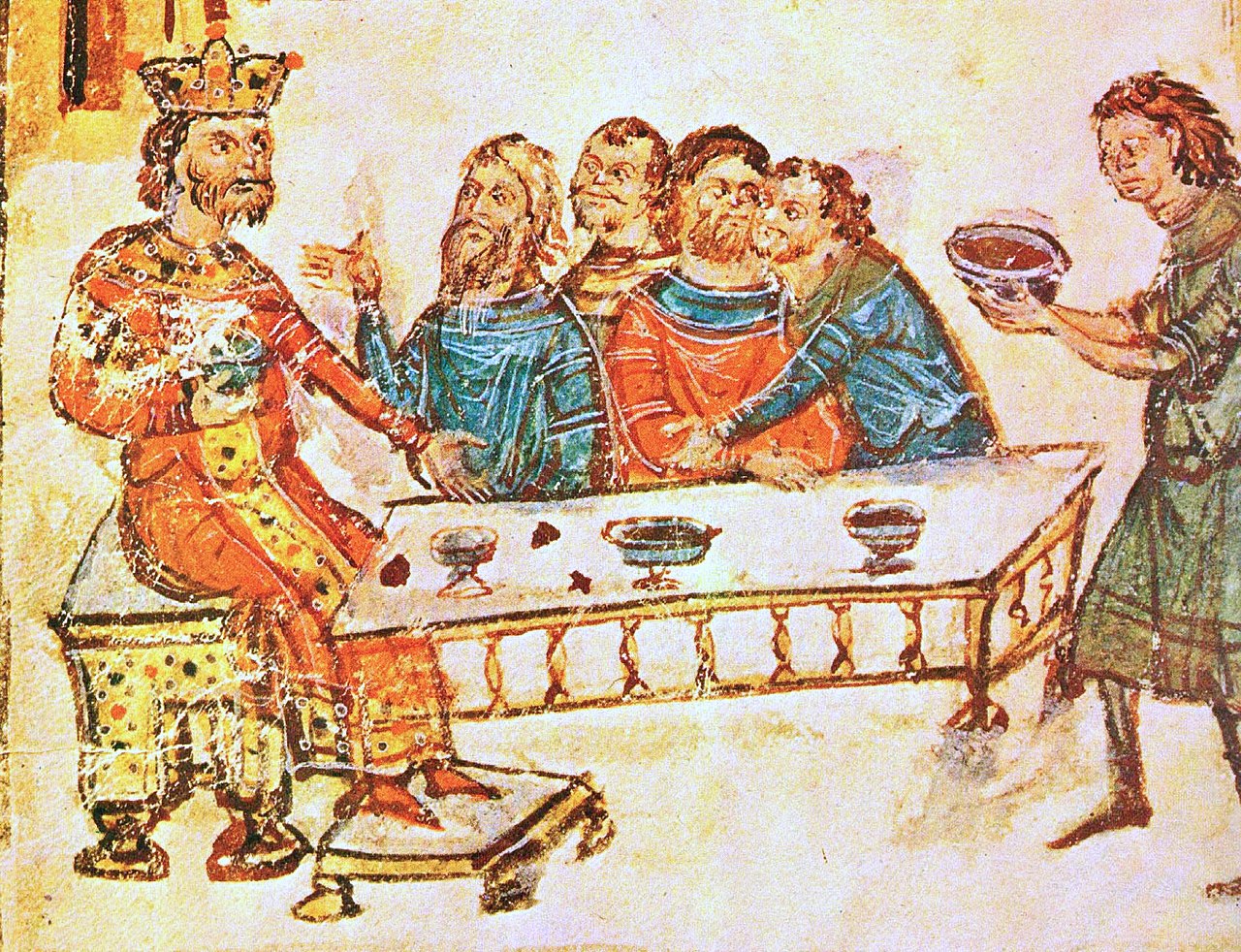 I will drink from your skull!
I will drink from your skull!
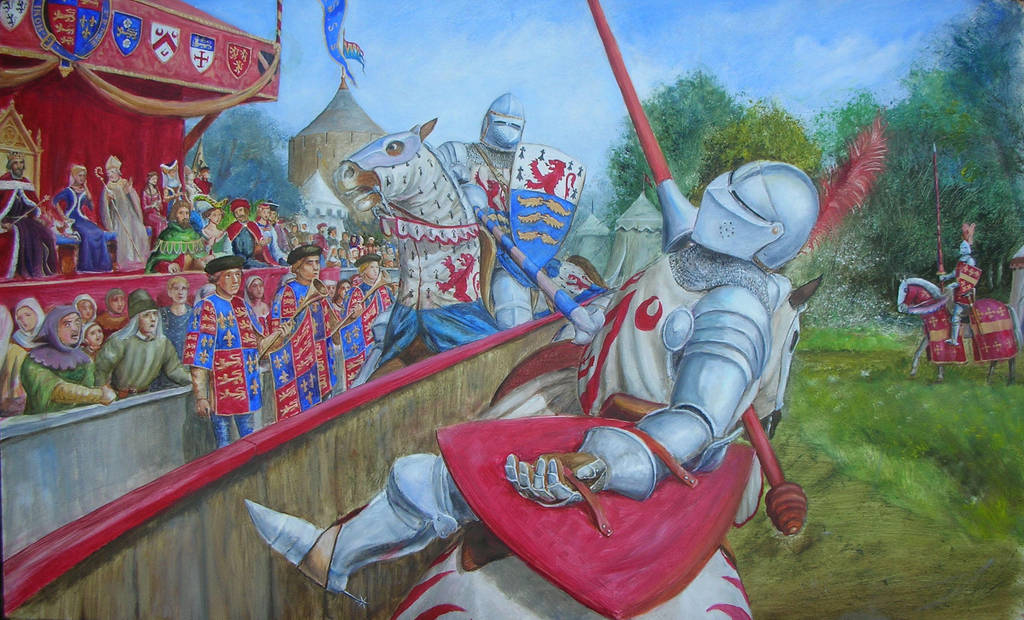 Typical Jousting scene
Typical Jousting scene
Great Rose Theater